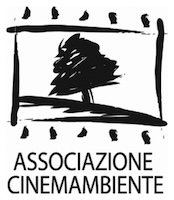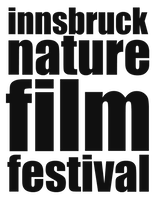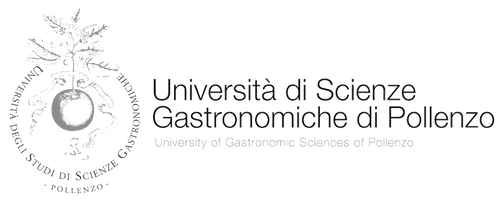Nanga Parbat 1938
Directed by
In-depth analysis
About the Movie Nanga Parbat 1938
«The 1938 German expedition to Nanga Parbat was the fourth in just six years: after the third tragedy (1937), the Himalayan mountain took on the sinister allure of the Mountain of Destiny for German (especially Hitler's) titanism. As in Arnold Fanck's first subject film (1924), conquering the summit becomes an absolute matter of principle, almost a hereditary mystical delivery, since if fathers pay with their lives for their challenge, it will be the children or grandchildren who will accomplish the feat, giving meaning and joy to the sacrifice. This is the script of the cinematic myth that in reality finds everyone faithful, except for the Himalayan mountain, alien to Germanic heroic pathologies and dramatically reluctant to accommodate on its summit even the great-grandchildren of the first expedition. In fact, despite unprecedented support from the air force and constant radio contact, the roped party led by Paul Bauer had to retreat due to atmospheric adversity. But if German mountaineering is forced to suffer yet another defeat, propaganda (the major Nazi creative art), which had filmed all phases of the operation, adapts the occasion to another purpose by turning the failure of an expedition into an apologia for German efficiency.
Thus, in the film Nanga Parbat 1938, the mountaineering event becomes marginal compared to the description of the perfect organisational machine: advanced technology, military discipline and, above all, timeliness of action. It is a blitzkrieg to the mountain, realised within the dromological cult that is emerging in pre-war Nazi training. For this semantic shift, the anonymous authors exploit, with notable skill, the craftsmen of the cinematographic language and especially of editing, following an already highly developed line of experimentation with the propagandistic potential of the media, with an echo of the heroic emotionality of the mountain cinema of the previous decade (Fanck, Trenker, Riefensthal).
The film immediately begins with Bauer, Bechtold and Uli Luft's ascent to Nanga Parbat, still shots from different angles and panoramic shots describe the landscape of the feat and the construction of a fourth camp at 6,200 metres in a Sisyphean struggle against the snowstorm, until the two key images of the document appear: the short-wave radio, Germanic Ariadne's thread in Himalayan hostilities, and the menacing dance of the clouds (unfailing in German mountain films) ready to thicken in a fatal meteorological conspiracy. With a full-screen S.O.S. scratched onto the film, the ‘commercial’ of the air rescue teams begins, and the montage sees alternating close-ups of the aviators and mountaineers, cockpit interiors and evocative aerial views of the Himalayan mountain range, details of the control panel, subjectivities of the waiting mountaineers and excited radio contacts. But in addition to the speed of the action, it is necessary to demonstrate the precision of the assistance as well as its quality and abundance, hence the cinematographic fiction of an improbable throwing of food just a few metres from the mountaineers and the repetition twice of a proud high-altitude meal. The documentary ends, or rather, is interrupted with the mountaineers of the third camp trying to reach the fourth to rescue their companions». (Andrea Balzola, film entry in Guida Alpina – Immagine e ruolo di una professione, Cahier n. 28 Museo Nazionale della Montagna “Duca degli Abruzzi” – CAI-Torino, Torino 1983, p. 17)
Travel Notes [Cinemambiente 1998]
Gute Reisende sind herzlos
Good travelers are heartless
Elias Canetti
From the travelogues of Hale's Tours to reportages on great exploits and exotic lands, from the road movie to the thousands of invented and untold stories of conquered spaces and lost or rediscovered identities, the theme of travel has accompanied the entire history of cinema, in all its genres and areas of production, the very metaphor of the new medium capable of restoring the movement of the world.
The brief itinerary proposed here allows us to observe some areas of the prolific relationship between the camera and the environment constituted by the travel film. These are works and materials that concern different dimensions of travel – some probably permanently disappeared – in which constant, however, is the exercise of looking at a reality, a place, a culture, an “elsewhere” reached through physical movement. Colonial conquest, exploration, scientific discovery, family vacation, as well as ritual and soul-searching, are the main passages of this reconnaissance, which reveals first and foremost the importance of the possibility of creating images, which document but also represent a determining factor shaping travel itself.
The components of violence and cultural imposition of Western voyages of conquest in the first decades of the century are, for example, shown in the work of recovery and reworking of original materials carried out by Yervant Gianikian and Angela Ricci Lucchi, who with the power of images alone manage to construct a lucid discourse on the role of the camera as an expression of a will to appropriation and domination. It is the same colonialist gaze analyzed by Peter Kubelka in his African journey in the 1960s, following a group of whites engaged in a safari.
The reliance on cinema as a possibility to record the real, to bear witness to natural events and human endeavors appears evident in the works of volcanologist Haroun Tazieff, who filmed apocalyptic scenarios and spectacular eruptions, or in the conspicuous documentation left by Alberto Maria De Agostini during his wanderings in Tierra del Fuego and Patagonia, or again in the images of early mountaineering expeditions to the great peaks, not without political implications in some cases, such as the document on the ascent of Nanga Parbat in 1938, which becomes an example of Nazi propaganda. The exploration of the environment as a human challenge, a ground for confrontation with the force and sometimes the hostility of nature, is still visible in the first filmed documentations of Antarctic expeditions, in which the narrative and spectacular vocation of cinema peeps out even where one would presume total adherence to realistic subject matter.
What becomes immediately clear in this chapter of the history of travel is that there is no truly achieved goal and conquered space, if not properly documented, no expedition and enterprise that can renounce being filmed and thus make its own contribution to the construction of an imaginary made of heroes and great adventures, of immense spaces real and unknown. Immersed in the silence of their innocence, and in the seduction of their genesis – possible in many cases despite difficult environmental conditions and thanks to daring actions – such images enchant today as they did then. The crossing of a last sailing ship filmed by Henrich Hauser, in which neither places of departure nor points of arrival are shown, becomes the emblem of the experience in itself of movement, a hymn to the deepest sense of travel. Of which the deviations from the desired outcomes, the failures, renunciations, tragedies or simply the impossibility of creating the longed-for image (the summit as well as the return) must also be collected. But the fascination with travel to distant and extreme lands can also become an explicit advertising tool, as happened with the African and Asian cruises organized by Citroën between the 1920s and 1930s, in which human enterprise and produced image turn out to be totally inseparable.
Another type of relationship with the environment is that traceable in home movies shot during family vacations: Gustav Deutsch rereads anonymous materials from the 1950s and 1960s, offering an interesting catalog on the amateur gaze in its attempt to capture places – in this case those deputed to tourism – and preserve memories.
Travel as an encounter with “other” worlds and cultures, rapprochement and self-discovery, is the theme finally of some works in which the dialogue with the environment is constructed on the basis of the awareness that movement is not the prerogative of the person holding the camera. Ulrike Koch's documentation of the migration of nomadic Tibetan herders to the great salt lakes of the Himalayan plateau, a tribute to a sacred dimension of travel; Bill Viola's contemplation of natural landscapes and animal presences, Chris Marker's reflections from the “two extreme poles of survival” – Japan and Africa – or even the crossed gaze proposed in another work by Deutsch (who juxtaposes his images of an Austrian in Morocco with those of a Moroccan in Austria), suggest modes of travel based on dialogue, confrontation, meditation: observing the movement of nature and its inhabitants, with respect and hesitation, leads to a movement of consciousness, a production of thought, an activation of memories. The relationship with a place is no longer established through topographical and cultural appropriation, but through an appreciation of differences, the maintenance of a subjectivity and a historical understanding. Travel as discovery and adventure belongs perhaps only more to mythology and nostalgia, just as the very conditions of image production and consumption turn out to be profoundly transformed with respect to the eras evoked here. The cognitive potentialities of travel, and therefore of the images borrowed from it, are then entrusted, rather than to a movement in space guided by a ravenous gaze in search of the pure and the uncontaminated, to an ability to stand in any different place, to let this otherness speak and be absorbed, also tracing its historical motivations and welcoming the dimension of memory that that place can give off in those who try to approach it.







